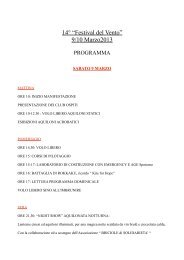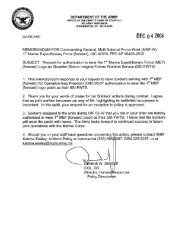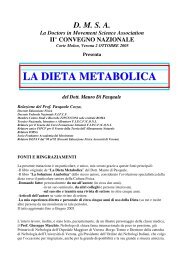Science vs. religion : what scientists really think - File PDF
Science vs. religion : what scientists really think - File PDF
Science vs. religion : what scientists really think - File PDF
Create successful ePaper yourself
Turn your PDF publications into a flip-book with our unique Google optimized e-Paper software.
36Crossing the Picket Lines: The Personal Faith of Scientistsabout 94 percent claim belief. 17 (Indeed it is virtually impossible to find a groupof Americans who do not believe in God.) About 28 percent of <strong>scientists</strong> whoare part of a religious tradition do not know whether or not they believe in God(the agnostic position). But agnosticism may mean something different to <strong>scientists</strong>than it does to members of the general public. By definition, their lifeworkof science requires insurmountable evidence, so for a scientist to say thathe is not absolutely convinced that God exists may still be consistent with hisreligious tradition. A scientist is rarely absolutely convinced about anything!In comparison, 15 percent of <strong>scientists</strong> say that they have a religious identityyet do not believe in God at all. Many of these are Jewish. In fact, among <strong>scientists</strong>who are Jewish, nearly 75 percent indicated an atheist position.What Do They Practice?Sociologist Peter Berger explains that human beings are constantly faced withthe choice of how to interact with their world. An individual’s social reality, heargues, is produced by her interaction with social structures. 18 One prominentsocial structure is <strong>religion</strong>. Religion is always at risk of no longer being plausibleto the individual, because she lives in a social world that often appears ordinary,mundane, and devoid of the supernatural in the day-to-day experience.Hence, Berger <strong>think</strong>s that <strong>religion</strong> requires a way of upholding its unique symbolsand doctrines, <strong>what</strong> he calls a plausibility structure . This structure manifestsas an actual social community (such as a church congregation) that is lesslikely to question than uphold the norms and doctrines of the <strong>religion</strong>. 19 In thisway, the believer, in the midst of a world that may contradict her beliefs, canrely on her community of like-minded others to reinforce the content of thosebeliefs. So then, how <strong>religion</strong> is practiced within the community—even morethan how a person identifies himself or <strong>what</strong> he believes—may be the key wayof keeping the believer’s faith intact. While he can pray in his own home withoutanyone else knowing, attending a worship service means an outward identificationthat shows others he is religious. Indeed, a central way that scholarsdetermine how committed an individual is to his faith is by looking at howoutward his faith is, whether he is an active part of a religious community.According to sociologist Robert Merton (discussed in Chapter 2 ), <strong>scientists</strong>have similar communities that uphold their ideals. Merton <strong>think</strong>s that one reasonwhy science is so successful is that the community of <strong>scientists</strong> all adhere tothe same norms—common guidelines for appropriate behavior—of <strong>what</strong> constitutesgood science. 20 However, there would be a stark difference between thecommunities of the religious and of Merton’s communities of the scientific.
















